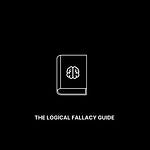Welcome to the 750+ new members of the curiosity tribe who have joined us since Friday. Join the 24,766 others who are receiving high-signal, curiosity-inducing content every single week!
Today’s newsletter is brought to you by AppSumo!
AppSumo was founded with one goal in mind: to give entrepreneurs the tools they need to grow their businesses, at a fraction of their regular cost. To do this, AppSumo partners with the hottest tech companies and gets you insane deals on their products and services. You’ll save money and discover exciting, up-and-coming technologies. I’m a customer, you should be too. Check it out below to take advantage!
Today at a Glance
Inversion is a simple, powerful mental model for solving complex problems.
When problems become challenging to solve forwards, they may be more readily solved backwards.
Inversion has a wide variety of applications, ranging from investing to business to leadership to relationships.
Invert, Always Invert
The world is an exceptionally complicated and competitive arena. On any given day, you wake up, encounter a wide array of challenging, multivariate problems, make decisions with highly-imperfect information, and then plan to do it all over again the next day.
To outperform in this complicated and competitive arena, you need serious problem-solving skills. Fortunately, contrary to what many of you have been told, these skills can be learned.
Today, I’d like to cover inversion - a simple, powerful mental model for thinking clearly and solving complex problems.
The History of Inversion
When solving problems, the human mind is wired to think in linear, logical, forward terms. This is (probably, I’m not a scientist!) due to the types of problems our ancestors faced - avoiding getting eaten by large animals, hunting other large animals, searching for the next meal, etc. These problems were inherently ephemeral and discrete - they had clear lines of action/reaction and obvious allies and enemies.
But as humanity entered the Agricultural Age, followed by the Industrial Age, followed by now the Digital Age, our problems seemed to change. They got much more complex. As Notorious B.I.G. famously said, “Mo technology, mo problems” (or something like that?).
As the problems get increasingly complex, the forward, logical process evolved in our ancestors often fails. Enter our simple, powerful mental model: inversion.
Let’s start with the basics. What is inversion?
Inversion is a mental model and thinking tool used by some of the world’s greatest thinkers and problem solvers. Simply put, it says that when problems become challenging to solve forwards, they may be more readily solved backwards.
Inversion as a general thinking tool has been around for millennia. Stoic philosophers would perform an exercise they called “premeditatio malorum” - roughly translating to “the pre-meditation of evils” - in which they would imagine the worst case scenario ahead of time. They believed that this exercise would force them to engage in behavior and make plans to avoid this outcome.
The more formal mental model was popularized by German mathematician Carl Jacobi in the mid-1800s. Jacobi was famous for his work in advancing the field of elliptic functions. Wikipedia tells me elliptic functions are “a special kind of meromorphic functions, that satisfy two periodicity conditions” - which provided approximately zero clarity, so I’ll just stick to my lane.
When faced with difficult problems (which happened frequently!), Jacobi had a strategy: “Man muss immer umkehren.”
The loose translation: “Invert, always invert.”
Jacobi frequently used this strategy if he were to be stumped on a challenging math problem. Rather than continuing to look at it the same way (forwards), he would restate it in inverse form (backwards). This new, creative perspective often allowed him to solve the problem more easily.
Fast forward 100+ years and inversion went mainstream when Charlie Munger made one classic, quintessentially pithy remark:
“All I want to know is where I’m going to die, so I’ll never go there.”
Munger realized that forward, logical thinking can only take you so far. To solve certain problems, you have to think differently.
Inversion is just that: a method for thinking about a problem differently. It requires you to look at things from a different angle to embrace a new perspective. Just as the captain surveys the battlefield for a new vector of attack, you too have to uncover a novel approach.
Perhaps more importantly, inversion trains your mind to think dynamically. Athletes have long known that training in a single plane leads to stasis. The same principle applies to the mind. Inversion trains it from multiple angles.
But let’s get practical. How and where can you apply it in your life?
Inversion in Investing
Warren Buffett famously stated that there were only two rules of investing:
"Rule #1: Never lose money. Rule #2: Never forget Rule #1."
Buffett (and his business partner Charlie Munger) have often evangelized the benefits of simply avoiding stupidity vs. seeking brilliance. This is a classic example of inversion in action.
When it comes to investing, the first point to internalize is that achieving long-term outperformance is extremely challenging (some would argue impossible!).
(Note: If anyone tells you otherwise, you should run in the other direction!)
Applying inversion, rather than solving for how to achieve outperformance, try solving for how to achieve underperformance. This sounds crazy, but bear with me…
What type of behaviors, thought patterns, and decisions would effectively guarantee you underperform the market? Said differently, how do you guarantee you break Buffett's Rule #1 and lose money?
By answering these questions, you are eliminating a lot of actions that may have crept into your investing process and scuttled your performance goals. Through this process of elimination, you may find a cleaner, shorter list of behaviors and actions that will help you to craft a strategy for outperformance.
Inversion in Startups & Business
For most startups and businesses, defining and executing against a strategy to drive durable, long-term growth is the primary priority. Grow or die.
But in a high-stakes, competitive market, deciding on the "right" strategy can often be incredibly difficult. There are simply too many options, too many variables, and too many decisions to make along the way.
Inversion can help. Here’s how:
Conduct a pre-mortem analysis - your own version of the "premeditatio malorum" of the Stoic philosophers - of the different strategies and levers. For a given strategy, ask a few questions:
If this were to fail, why did it fail?
How might we have avoided this failure?
What are the consequences of this failure?
If you perform this exercise across the various considered strategies for your startup or business, the answer of which strategy to pursue will likely come into clear view. The pre-mortem analysis can be a very helpful exercise for cutting through the noise and making quick, effective decisions.
Inversion in Leadership
There are countless books on how to be an effective leader. But when you're dropped into a new context and asked to lead, these books can only take you so far. Leadership is not a one-size-fits-all endeavor. Every new situation requires a new approach to leadership. So how do you lead?
Just invert the problem.
Ask yourself a few key questions:
How would I fail to lead?
How would I fail to garner the respect of my team?
If I were a team member, what would really piss me off about this new leader?
Answer these questions honestly. Thinking about the problem differently (backwards!) will start you down the right path.
Inversion in Relationships
I’m no relationship expert, but I do know that human relationships are arguably the most complex "problem" in nature.
How do you foster a strong, healthy relationship? There is no easy answer, but you can start by inverting the problem.
What behaviors or actions would ruin this relationship?
Now avoid those! It's definitely not perfect, but it's a start.
As you can see, inversion is really quite simple - yet as these varied examples have shown, it is dynamic, powerful, and useful across a range of situations.
So the next time you encounter a challenging problem, just remember…
“Man muss immer umkehren.”
Invert, always invert.
The Bloomboard - Featured Opportunities
Pallet - Full Stack Software Engineer
Beyond Protocol - Director of Ops, Director of Business Development
Metafy - Senior Product Designer, Senior Technical Recruiter
Panther - Customer Delight Manager
Avicado - Marketing Manager, Data Consultant
Commonstock - Community Manager, Marketing Designer
Atreides Management - Data Analyst
Synthesis - Head of People, VP Growth, Technical Recruiter
Pesto Tech - Account Executive
The full board can be found here!
We have had a bunch of hires through the board and the results for featured roles have been insane (one role had 200+ applications in 1 week)! If you are a high-growth company in finance or tech, you can use the “Post a Job” button to get your roles up on the board and featured in future Twitter and newsletter distributions.
That does it for today’s newsletter. Enjoy this? Join the 24,750+ others who are receiving high-signal, curiosity-inducing content every single week! Until next time, stay curious, friends!




















Invert, Always Invert